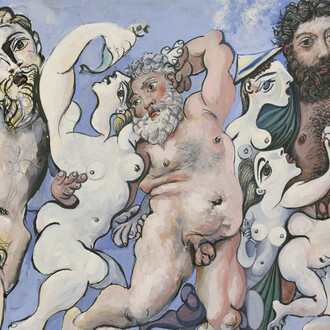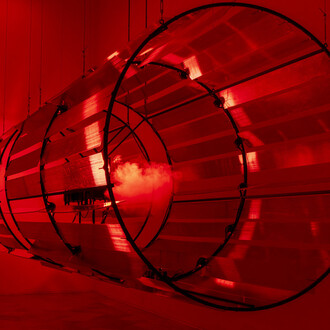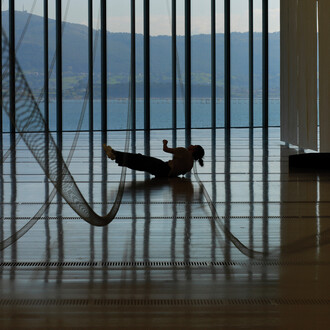Casado Santapau Gallery is proud to present the first solo exhibition in Madrid of renowned German artist Georg Karl Pfahler (1926–2002), one of the leading figures of Concrete Art and a forerunner of European Color Field painting. This exhibition not only marks a milestone in Casado Santapau’s program but also offers a unique opportunity to rediscover a key figure in twentieth-century art.
The show brings together a carefully selected group of works representing the various stages of Georg Karl Pfahler’s career (Weißenberg, 1926–2002), a pivotal figure in the development of postwar geometric abstraction in Europe. From his early compositions of the 1960s—defined by flat forms, vibrant colors and sharply contoured shapes—to his later explorations of pictorial space, the exhibition traces the formal evolution of an artist who managed to combine compositional rigor with expressive freedom, in constant dialogue with the international movements of his time.
Trained at the Kunstakademie Stuttgart under Willi Baumeister, Pfahler began his career working in sculpture and design, but soon turned decisively to painting. His early works, still influenced by the playful, abstract language of his teacher and artists such as Paul Klee and Fernand Léger, gave way to a turning point in 1958 with the Formativ series—a group of 55 paintings that marked his artistic emancipation, particularly from Baumeister’s influence. From that point forward, he developed a visual language based on the confrontation of clearly defined fields of color, dynamic geometric structures, and a conscious use of negative space and spatial tension. This approach would solidify in his best-known series—Tex, West-Ost-Transit, Espan, Leda, Fra Firenze, and Floridella—which positioned him as one of the foremost exponents of Hard-edge painting in Europe.
Pfahler’s work emerged within the context of Germany’s cultural and institutional reconstruction after World War II, yet actively engaged with the parallel developments of American abstract painting. His interest in the interplay between form, space and color aligned him with Color Field Painting. In this sense, Pfahler not only absorbed influences from movements such as the Bauhaus and Action Painting, but also anticipated many of the formal debates that would shape abstraction in the decades to come.
His international recognition began in 1965 with his participation in the exhibition Signale in Basel, where he showed alongside artists such as Al Held, Ellsworth Kelly, Kenneth Noland and Jules Olitski. In 1966, he held his first solo exhibition in the United States, curated by Barnett Newman at the Fischbach Gallery in New York, who encouraged Pfahler to work in larger formats, suited to the expansive exhibition spaces of contemporary American art. That same year, he was one of the few European artists selected for the landmark exhibition The Responsive Eye at the Museum of Modern Art (MoMA), New York.
Pfahler continued to gain international prominence, representing Germany at the Venice Biennale in 1970—alongside Günther Uecker and Heinz Mack—and again at the São Paulo Biennial in 1981, the second oldest biennial after Venice. He enjoyed sustained success until the rise of Neo-Expressionism in Germany in the late 1980s, led by artists such as Georg Baselitz, Sigmar Polke and Gerhard Richter. Despite the popularity of that movement, Pfahler continued to explore the possibilities and limitations of hard-edge painting until his death in January 2002 in Emetzheim, Franconia.











![Saul Steinberg, The museum [El museo] (detalle), 1972. Cortesía del Museo de Arte Abstracto Español](http://media.meer.com/attachments/dfbad16c22c5940b5ce7463468ac8879f3b4bf23/store/fill/330/330/042ecf3bcd2c9b4db7ddbc57cb32e950c095835f7b5cd55b6e1576a6e78c/Saul-Steinberg-The-museum-El-museo-detalle-1972-Cortesia-del-Museo-de-Arte-Abstracto-Espanol.jpg)


